Analysis
Sotheby’s $306 Million Impressionist and Modern Art Sale Exposes Skeptical Market
A van Gogh painting of a baby provided the night's most vigorous bidding.
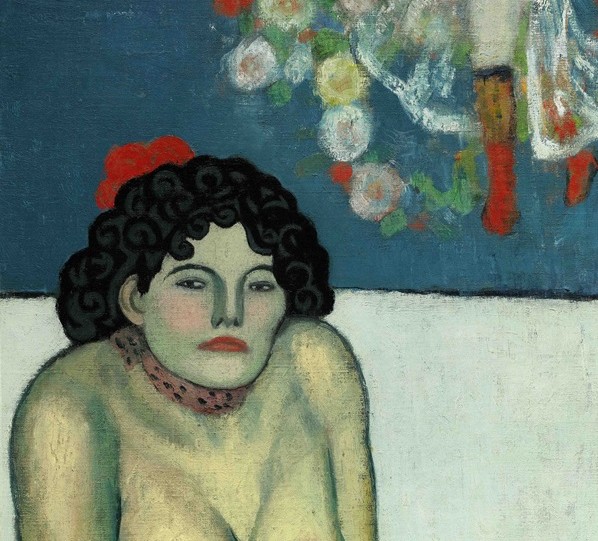
Courtesy of Sotheby's.
A van Gogh painting of a baby provided the night's most vigorous bidding.

Brian Boucher

Led by a $67.5-million Picasso, Sotheby’s moved $306.7 million worth of paintings and sculpture at its Impressionist and modern art auction Thursday night in New York. While bidders were few on the priciest lots during the 90-minute auction, the proceedings were a drastic improvement on the house’s lackluster $377 million sale on Wednesday of the collection of former Sotheby’s chairman A. Alfred Taubman.
The results landed at the low end of the pre-sale estimate of between $275.6 and $369.2 million on a slim 47 lots. (The house’s last three Impressionist and modern art sales had an average of 70 lots each.) Among the other top sellers were Kazimir Malevich, Claude Monet, and Vincent van Gogh, in a sale that also included works by Paul Cézanne, René Magritte, and Joan Miró. Three-quarters of the works found buyers.
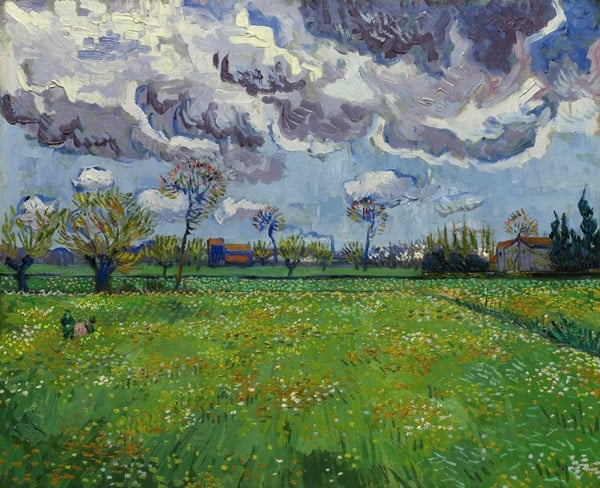
Vincent van Gogh, Paysage Sous Un Ciel Mouvementé, 1889.
Courtesy of Sotheby’s.
Dealers’ reactions, however, were mixed.
“It was very strong,” New York dealer David Nash told artnet News as he exited the sales room. “There was vigorous bidding, even though bidders were a bit sparse on the van Gogh,” he said, referring to the night’s second-highest lot, a landscape by the artist that fetched $54 million.
Paris dealer Christian Ogier was a bit more restrained. “The night sailed along pleasantly enough,” he said, before blaming the lack of high-end bidders on the house’s optimism. “The prices are still so high, with the house pushing the estimates too hard,” he said. “It doesn’t make for lively bidding.”
The Picasso that was the night’s biggest sale dates from the very beginning of his Blue Period and shows a nude cabaret performer with striking red lips, complemented by a red bow in her hair. La Gommeuse was painted when the artist was just 19; it has an intriguing back story including a long-hidden painting underneath the canvas’ lining. Billionaire art collector and conservative political donor William Koch offered the painting for sale, having bought it at Sotheby’s London in 1984 for just £1.4 million.
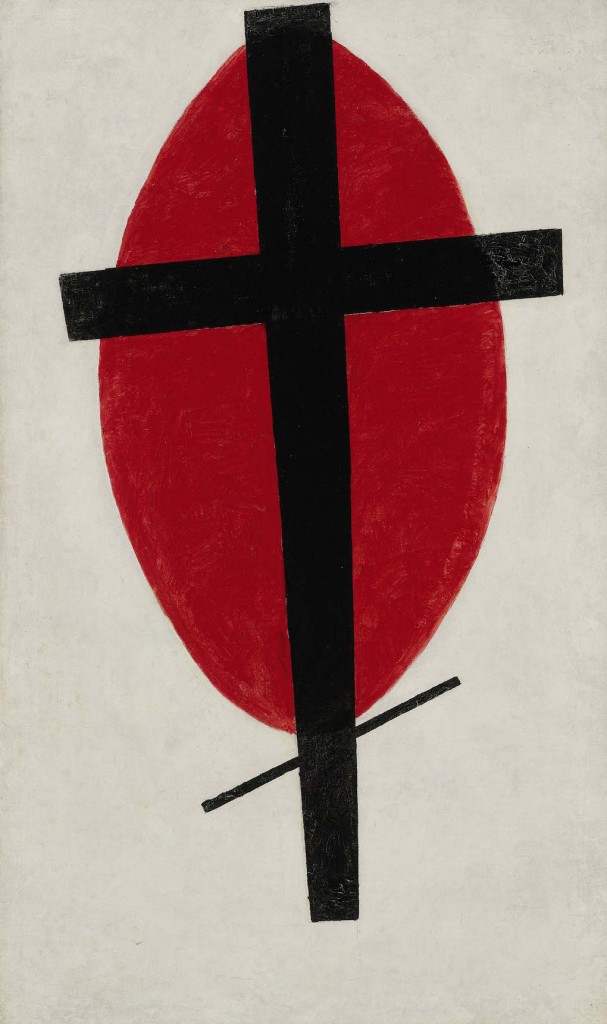
Kazimir Malevich, Mystic Suprematism (Black Cross on Red Oval), 1920-1922.
Courtesy Sotheby’s.
Van Gogh’s Paysage sous un ciel mouvementé, the night’s second-biggest sale, was painted in Arles in 1889, just a month before the artist checked himself into an asylum at Saint-Rémy. Though it had been off the market for six decades, it fell short of its pre-sale estimate of up to $70 million.
The one lot guaranteed to sell was Malevich’s 1920-22 canvas Mystic Suprematism (Black Cross on Red Oval). The canvas had hung at Amsterdam’s Stedelijk Museum for some fifty years, until it was returned to Malevich’s heirs, who maintained that the paintings had been misappropriated by the party that sold them to the museum. The heirs brought the canvas to market Thursday.
The painting’s backstory, including appearances in museum shows from Leningrad’s Russian Museum to the Guggenheim Museum in New York, failed to drive the painting to its high estimate of $45 million; it brought $37.8 million to come in as the night’s third-highest price. (Malevich’s auction record remains $60 million, set at Sotheby’s New York in 2008 by the 1916 canvas Suprematist Composition.)
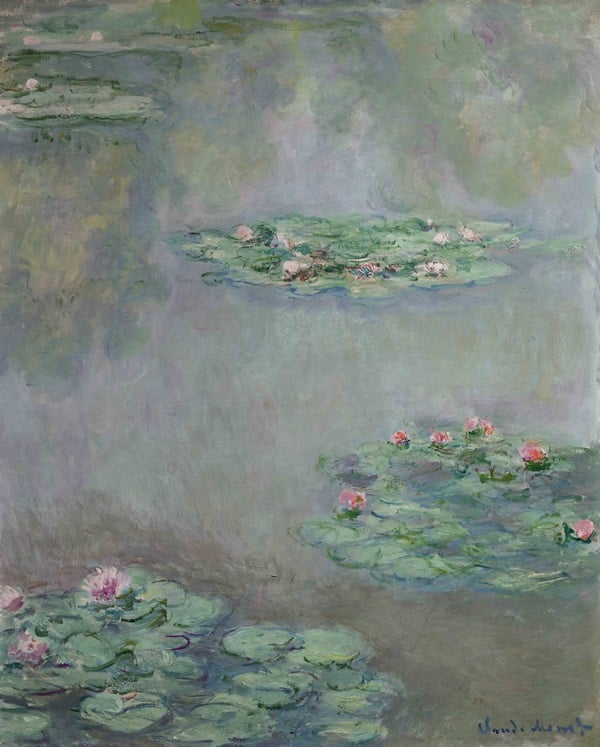
Claude Monet’s Nymphéas (circa 1908).
Image: Courtesy of Sotheby’s.
The priciest lots sometimes had just one or two bidders; the auctioneer waited around for a full thirty seconds before a single bid materialized on the van Gogh landscape. But a tiny van Gogh painting of a plump infant, Le Bébé Marcelle Roulin (1888), sparked a several-minute contest among seven bidders, finally selling for $7.6 million, exceeding its $5 million high estimate.
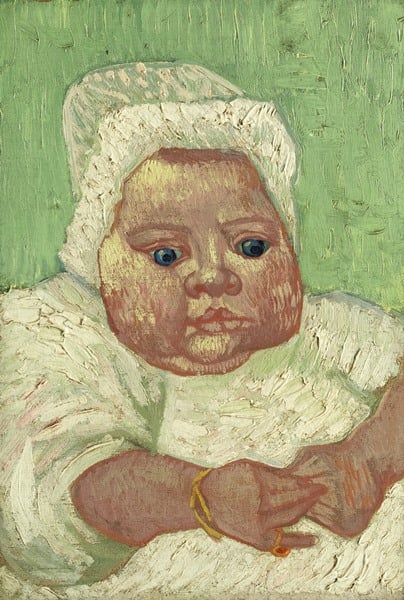
Vincent van Gogh, Le Bébé Marcelle Roulin, 1888. Photo courtesy Sotheby’s.
“That was extraordinary,” Nash said.
Monet’s Nymphéas (ca. 1908), showing the surface of a pond on the artist’s country estate, bore a high estimate of $50 million, but sold for just $33.9 million. The painting had come to auction twice over the last two decades, and each time, its soaring prices illustrated the dramatic rise in the art market. It fetched $5 million at Christie’s New York in November 1995 ($7.8 million, adjusted for inflation), and it brought $8.4 million ($11.6 million, adjusted for inflation) at Sotheby’s New York five years later, when Koch bought it.
Still to come are Phillips New York’s sale of contemporary art, which happens this Sunday in an unusual bit of scheduling. That kicks off a blockbuster week, with a Christie’s sale Monday night combining works from the 19th century through contemporary art, led by an Amedeo Modigliani canvas tagged with an estimate of $100 million. Christie’s sale of contemporary art takes place Tuesday, followed Wednesday by Sotheby’s sale of contemporary art and Thursday by Christie’s auction of Impressionist and modern art.